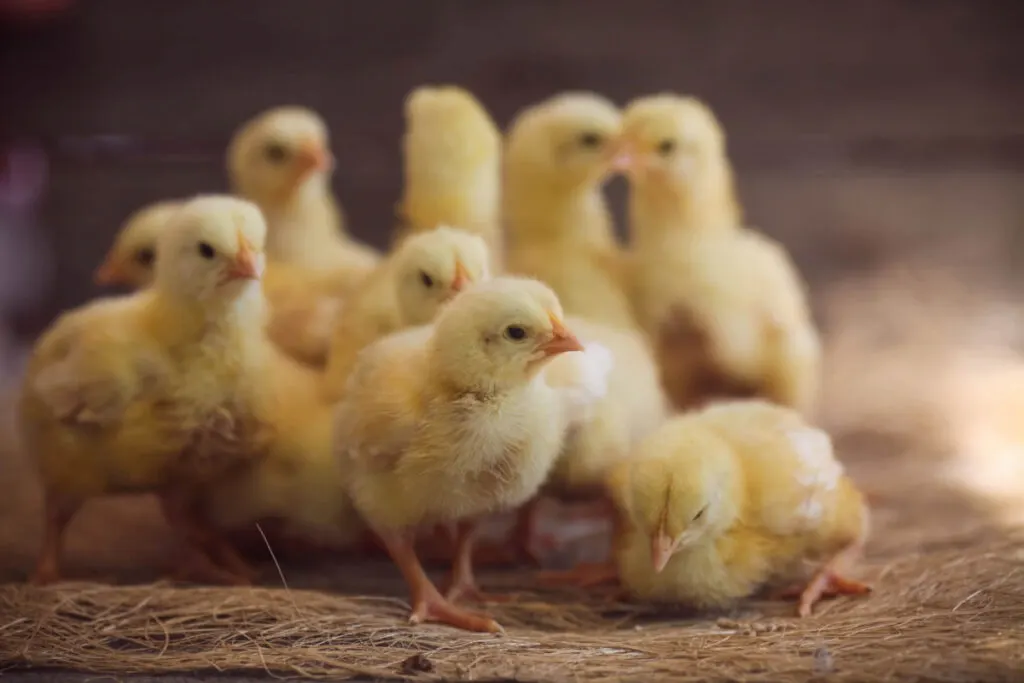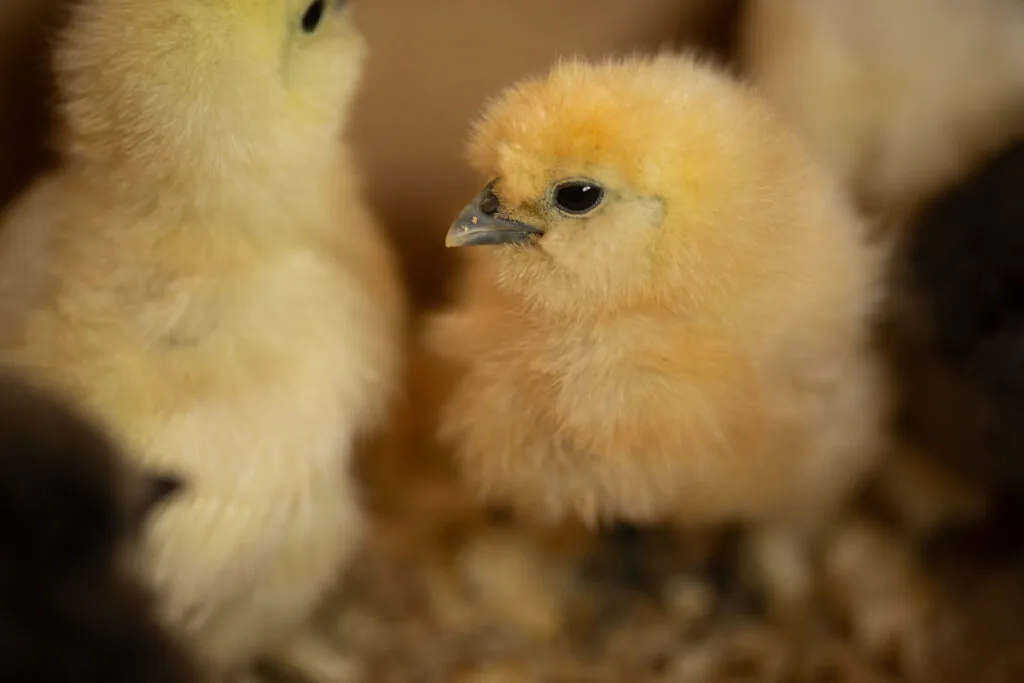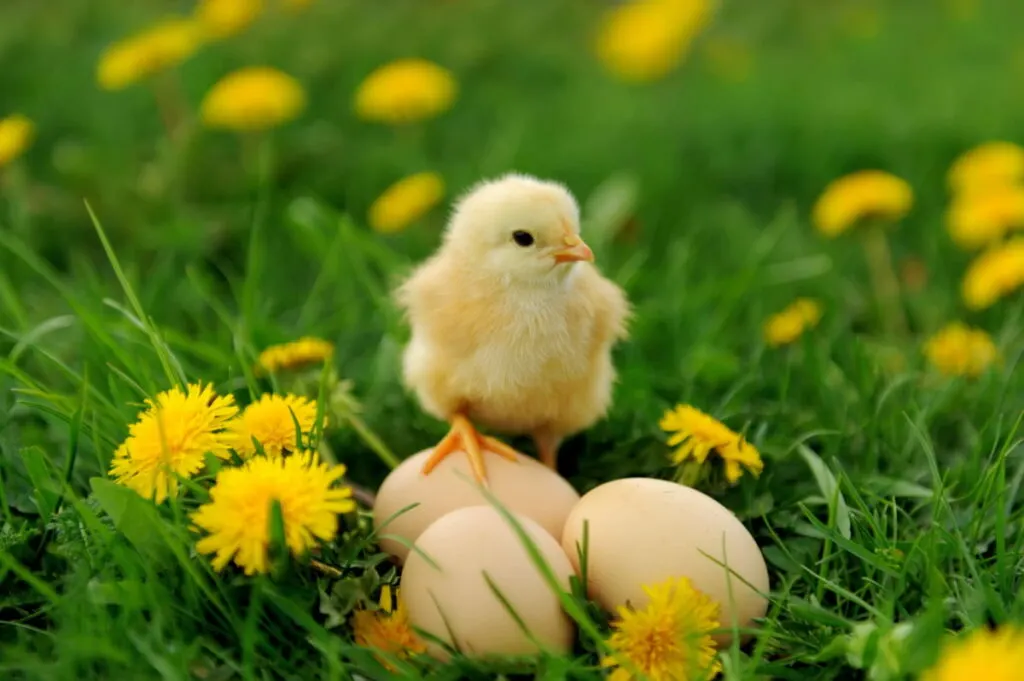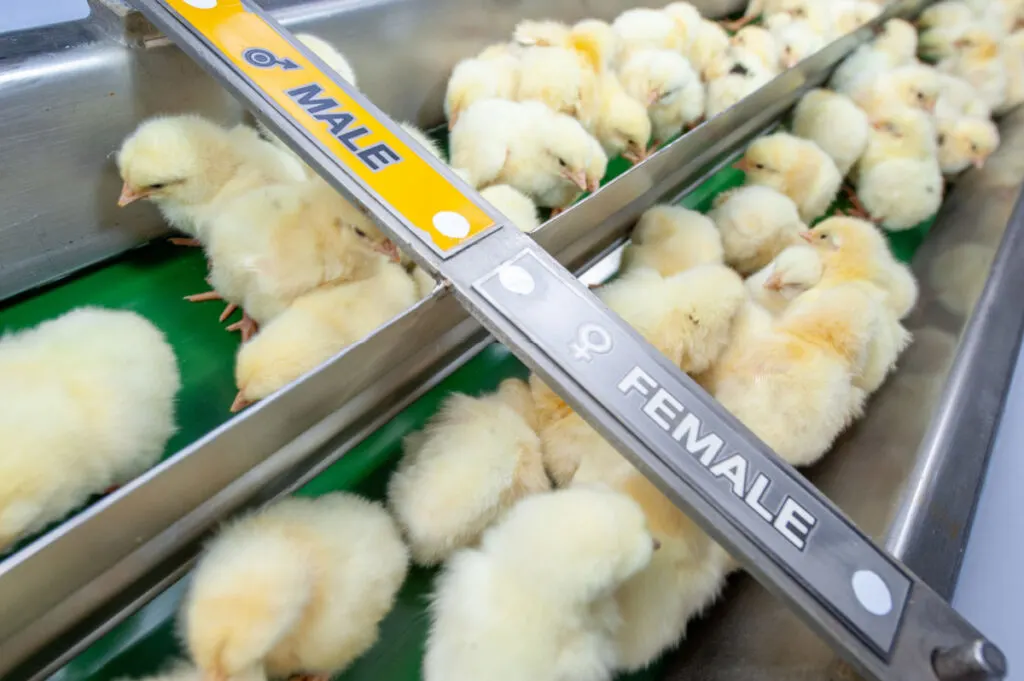When you order chicks online, they are usually 1–3 days old. It’s why they are often called Day-Old-Chicks (DOC). Hatcheries and farms ship their chicks out within 24 hours after they hatch.
However, the age of chicks can vary from breed to breed and can be influenced by different factors, including the time of the year, distance, time of arrival, and the supplier.
So, how can you tell the age of chicks?
In this article, we’ll explore the different ways to determine the age of your chicks and what to look out for when buying chicks. Keep reading!

Table of Contents
What to Look for When Purchasing Chicks
There are a few important things to consider when buying chicks to ensure that you’re getting the best stock possible.
Here are some tips on what to look for when buying chicks:
1. Overall Appearance
Chicks should have eyes that are clear, bright, and alert. Their feathers should also be clean and fluffy. They should be active and curious.
Most chicks explore their surroundings and actively interact with their peers.
Avoid chicks that appear lethargic or dull and have pasty vents, matted feathers, or discharges from their eyes or nostrils. An inactive or dull-looking chick is a red flag.
2. Vaccination Status
Vaccinating your chicks is one of the most important things you should do.
Some suppliers may sell chicks that have been vaccinated against poultry diseases like Infectious Bursal Disease, Marek’s, etc., while others may not.
It’s important that you ask the supplier if the chicks have been vaccinated, along with the appropriate vaccination records as proof.
If they are unvaccinated, you must get right on it immediately.
3. Breed and Sex
This might not be as important if the breed or sex of the chicks isn’t very important to you.
However, if you intend to raise your birds specifically for egg production or meat production, it’s important that you get the breed that is most suited to that.
Sexing the chicks is also equally important. That way, if you want only egg layers, you’ll get only females rather than males.
4. Quantity
Chickens are social creatures, and they thrive in company. Raising a lone chick may essentially kill it. You want to get three (3) or four (4) at the least.
The more, the merrier! However, ensure you have the resources and space needed to raise them well.

How to Tell the Age of Chicks
The best way to accurately tell the age of chicks is to ask the hatchery or store for the hatch date or records. If you don’t have access to these, you can try figuring out the age of the chicks yourself.
How? Here are some tips to look out for when aging chicks:
• Plumage:
At 2-6 days, chicks don’t have any feathers, just a fine fuzzy down covering their body.
Their first fine feathers —the wing feathers— appear around the 7th day.
Afterward, the tail feathers start coming in, and by the 3rd or 4th week, your chick is fully covered in feathers.
This is especially true for light breeds that are usually fast feathering.
For the heavier breeds that are slow feathering, their wing and tail feathers may not fully come in until the 3rd or 4th week, and they may not be fully covered in feathers until their 6th or 7th week.
• Comb and Wattles:
When chicks hatch, their combs are only somewhat visible. They are more visible in the males, but the females often don’t show it yet.
The wattles don’t come in until much later.
Although this is not an accurate way to age chicks at this stage, as in some breeds, they don’t show in either sex until the third week; it gives you an idea of how old they might be.

When is the Best Time to Buy Chicks?
Most hatcheries and stores sell chicks during the spring season and the early summer months, usually between February and June.
This is often because some breeds do not lay eggs during the cold months, so getting chicks in the winter is difficult.
You should buy your chicks during spring, preferably between March and April.
Chicks need warmth to survive, especially in their first few weeks of life, and they also need to be mature enough to survive the colder temperatures of the winter months.
By spring, temperatures would have risen a lot, and it won’t be too cold for them, although you would still need to provide them with a heat source.
They could start laying eggs by the winter of that same year, unlike when you buy them in summer or fall and have to wait till the spring of the following year.
If you intend to buy chicks outside of this selling season, you might need to find a private farm or supplier.
What is the Best Age to Buy Chicks?
I recommend buying chicks no younger than 4–5 days old because the older a chick is, the less susceptible it is to cold/stress.
I personally have bought hundreds of day-old chicks that were shipped to me by US mail from the hatchery. Though I did have some losses, they generally do pretty well.
If you feel you are more sensitive to losing a baby chick or are rearing these chicks with children and want to minimize death as much as possible, it’s best to go with 1 – 2-week-old chicks.

Where to Buy Chicks?
You can order chicks online from hatcheries, make in-person visits to small local farms, or buy them from a feed store or a farm supply store.
If you are ordering from a hatchery, it would mean that you plan on starting with a big batch. I wouldn’t advise this if this is your first time, but if it isn’t, then by all means.
There are significant advantages to buying from a hatchery, such as:
- They offer a variety when it comes to breeds.
- They are mostly NPIP (National Poultry Improvement Plan) certified for poultry health.
- They offer both sexed and un-sexed chicks. You can request that the chicks be sexed.
- They have a refund policy. If any of the chicks arrive dead or die within the first few days after they have been shipped, you can get a refund.
If you are just starting out, you could share the order with neighbors or other interested friends, so you get quality even if you don’t want the quantity they’re selling.
You could also go to a small farm to pick them up yourself. This covers the minimum order problem; you can just take a few.
Sexing might not be guaranteed, but they do have a return policy.
You can also buy them from a feed or farm supply store. They mostly order from hatcheries.
The only problem you could face is that the employees might not know anything about them, and you may end up with a mislabeling issue.
Notes
It’s very important to buy chicks that are appropriate for your experience level.
If you’re a beginner, you may want to get older chicks because they are more adaptable and require less specialized care.
Experienced farmers can get chicks that best suit their needs at the time.
However, bear in mind that:
- Chicks are fragile, especially when they are just days old.
- Chicks need specialized care, especially for housing, feeding, and brooding.
- Chicks should be closely monitored.
- Chicks need to be vaccinated against common diseases.
Conclusion
Chicks are beautiful creatures. They do require intensive care, but they can be delightful to raise.
However, if you notice something’s wrong, don’t panic. Instead, call your veterinarian.
Resources
- https://thankchickens.com/what-age-do-chickens-get-wattles
- https://meyerhatchery.zendesk.com/hc/en-us/articles/360009871752-Day-Old-Chick-Identification
- https://www.ecopeanut.com/how-old-is-my-chick/
- https://www.dare2dreamfarms.com/amp/raising-baby-chicks-for-beginners-part-2-how-to-buy-baby-chicks
- https://www.chickensandmore.com/how-old-is-your-chicken
- https://poultryace.com/how-old-are-chicks-when-you-buy-them
- https://cluckin.net/what-is-the-best-age-to-buy-chickens-and-why.html
- https://insteading.com/blog/buying-baby-chicks
